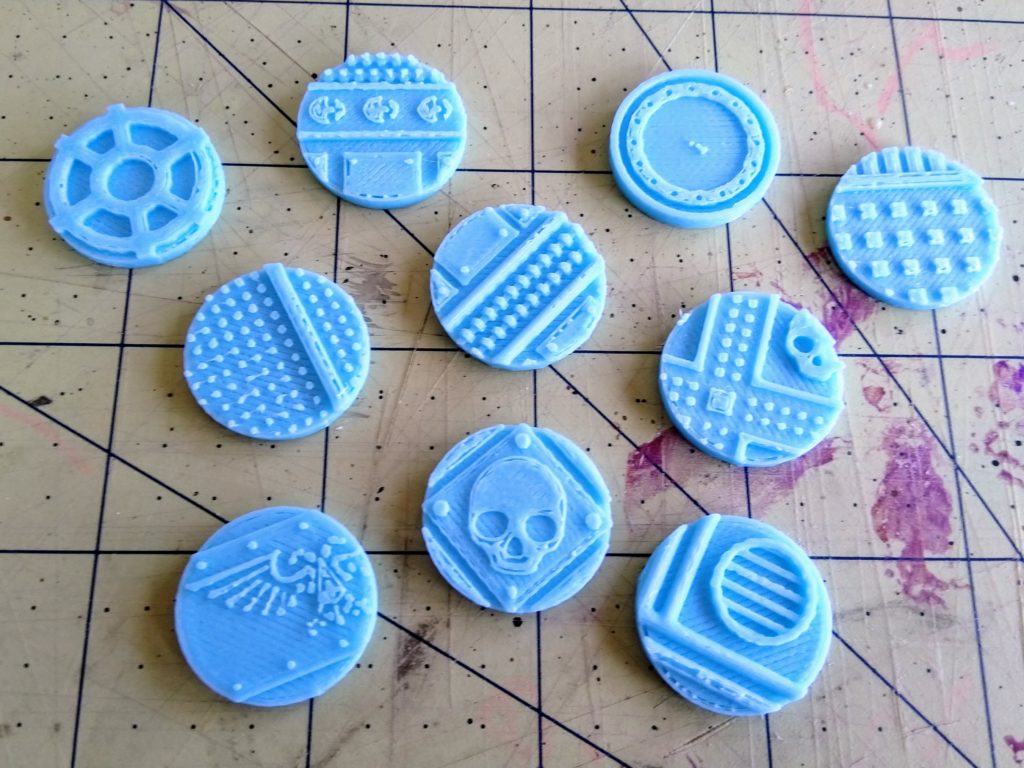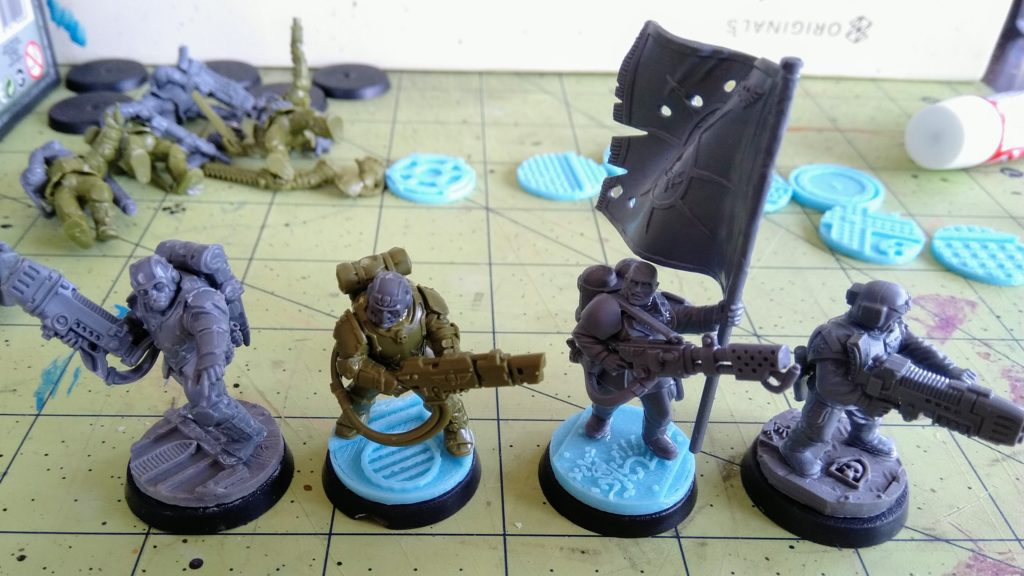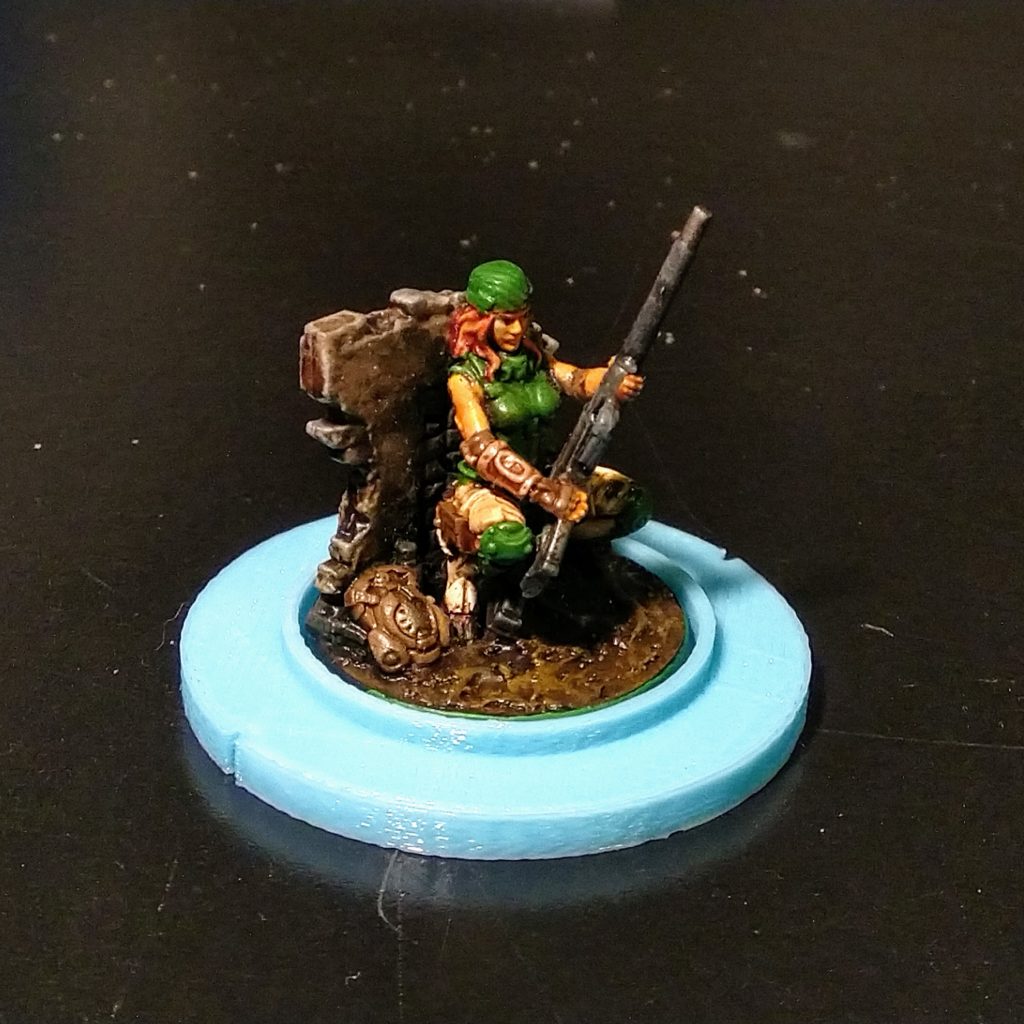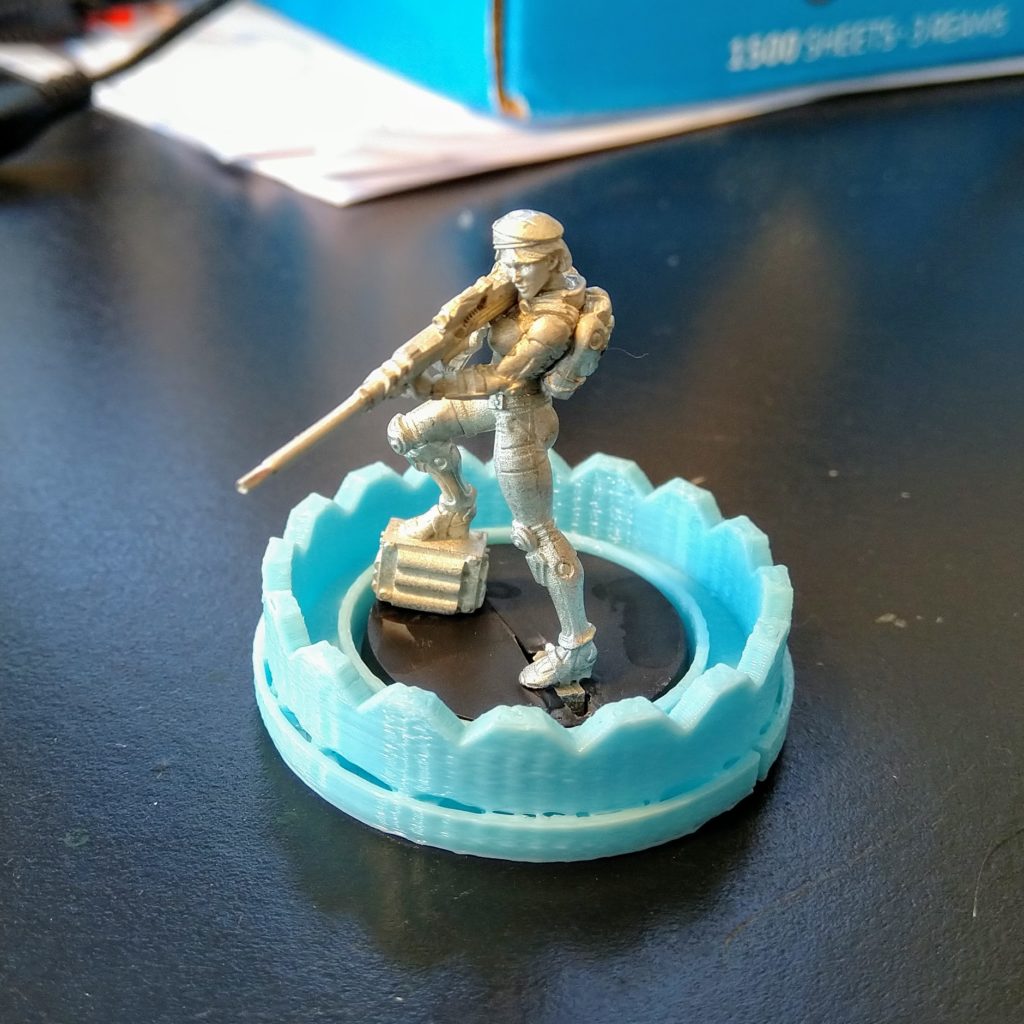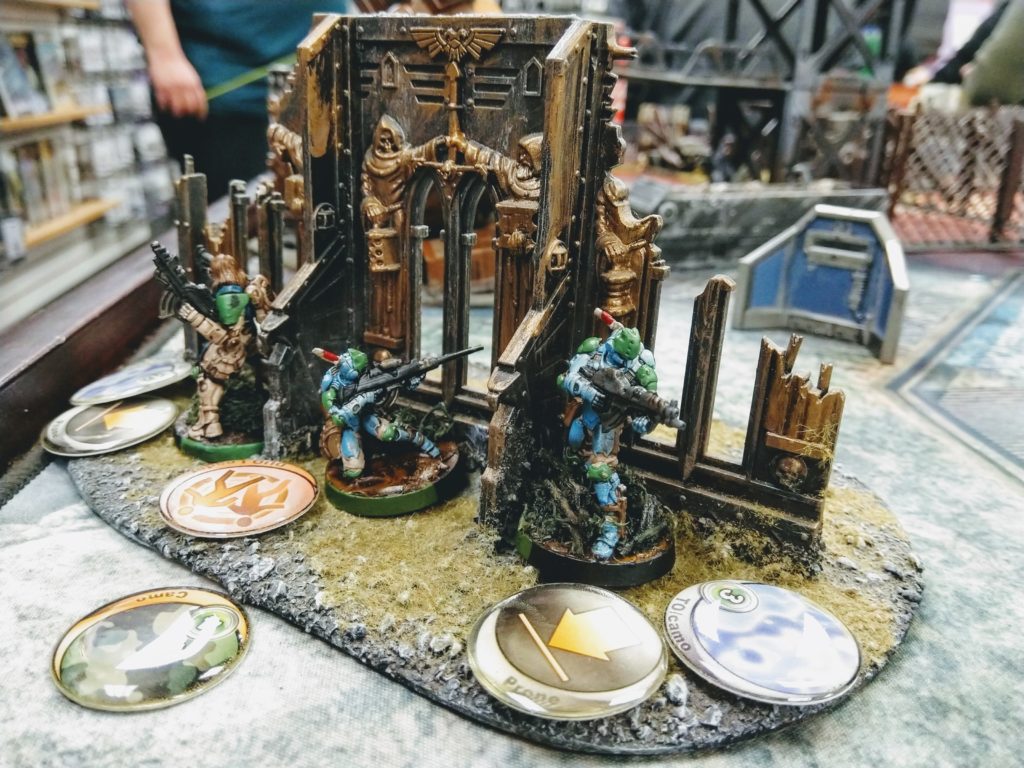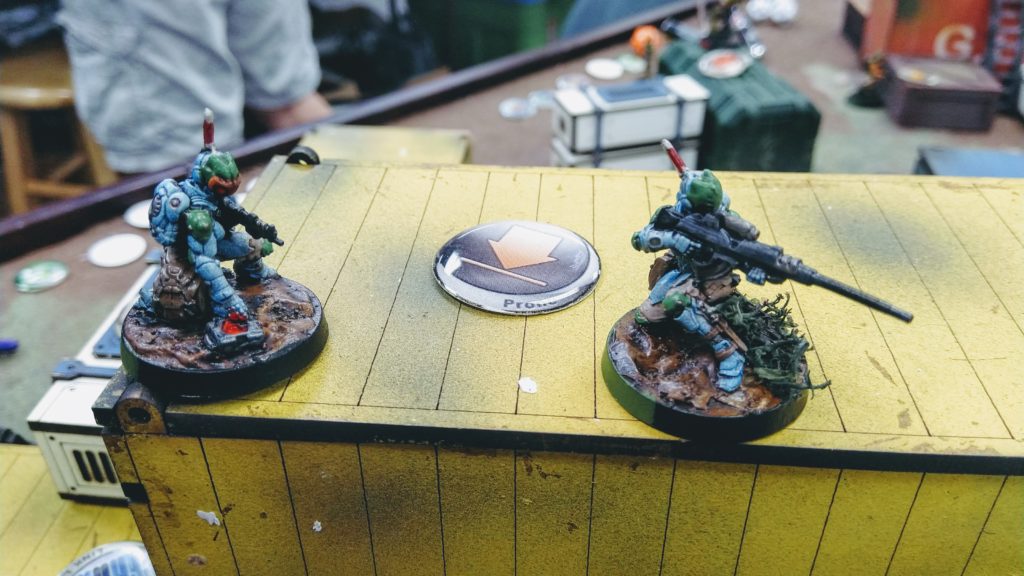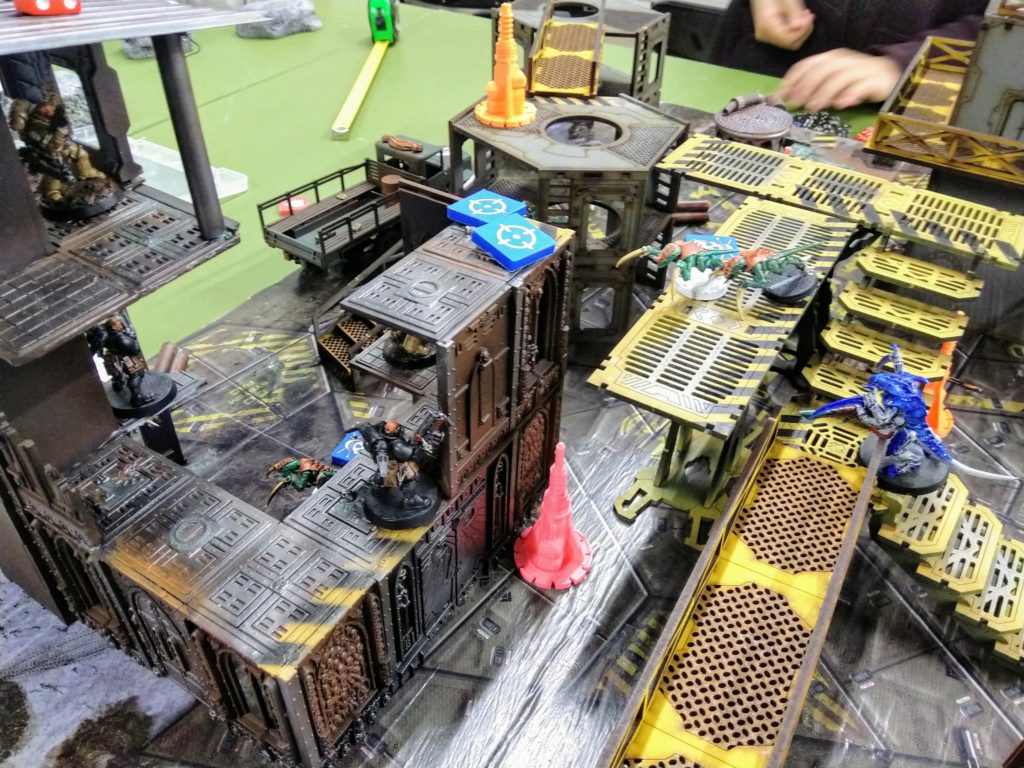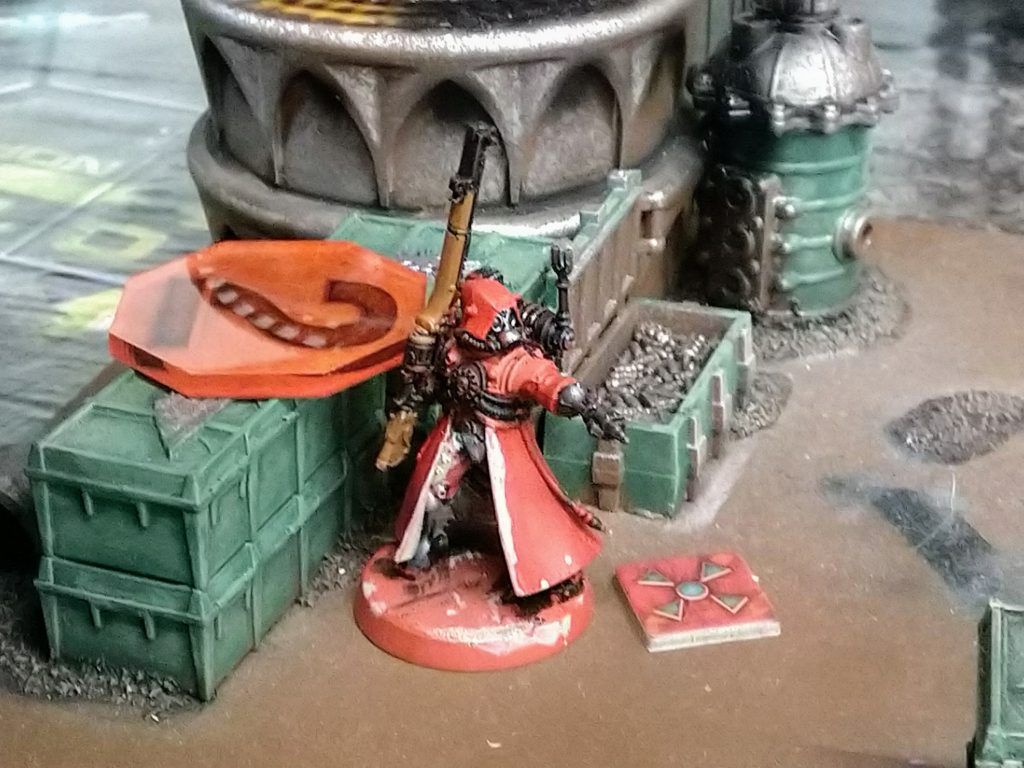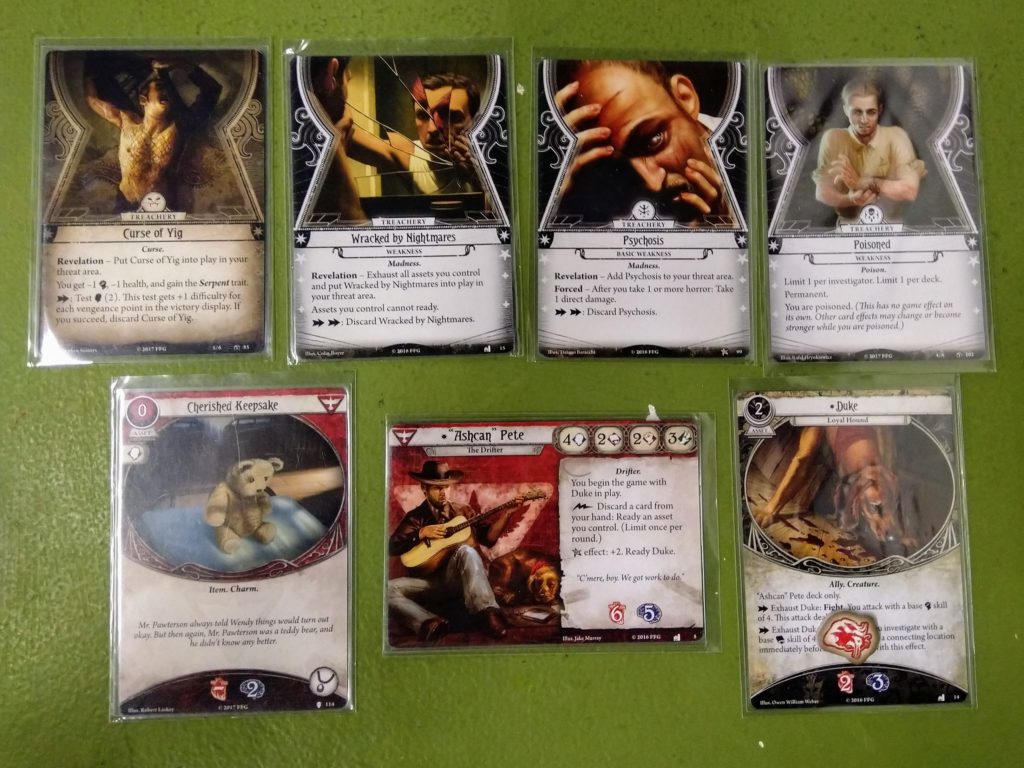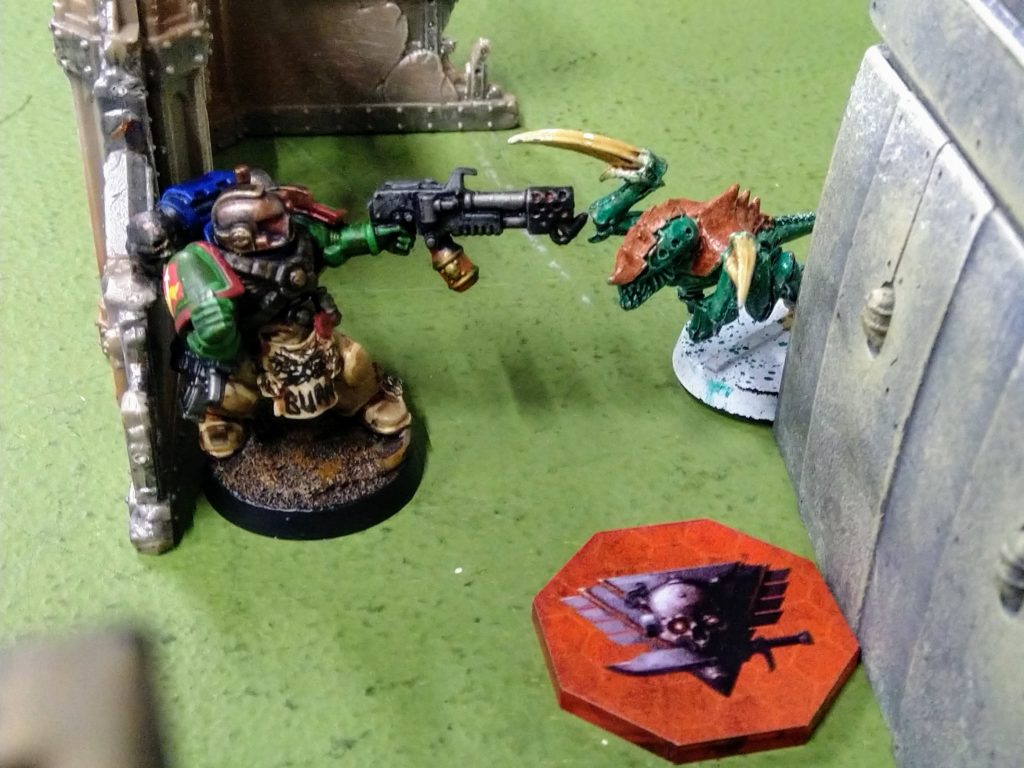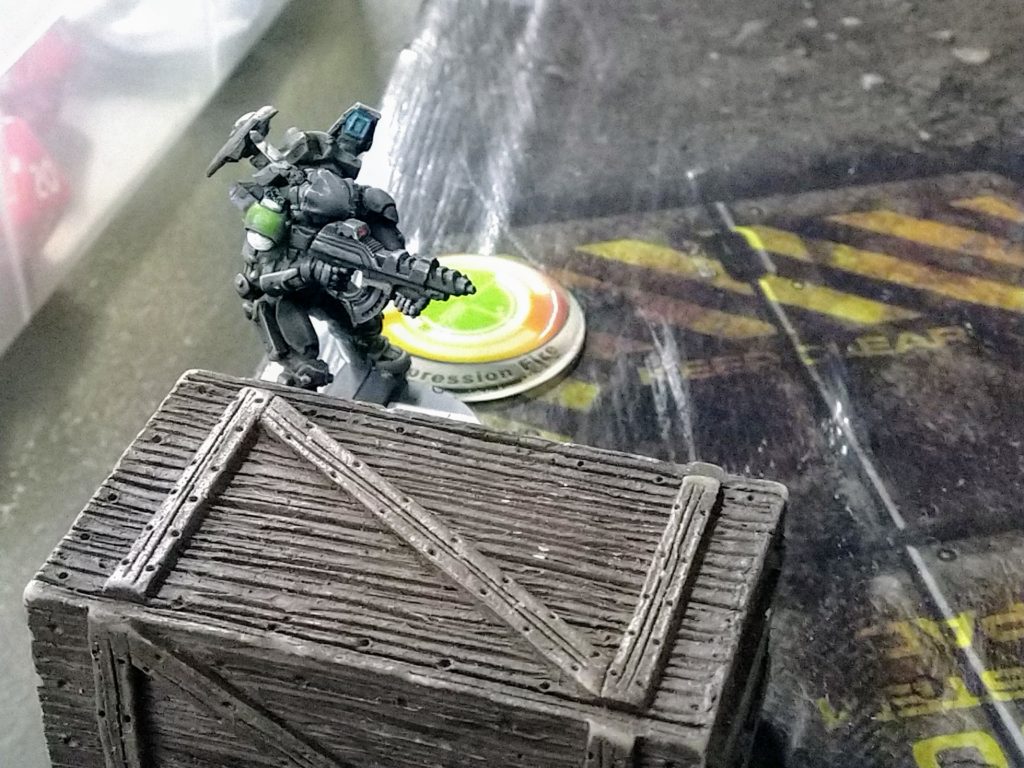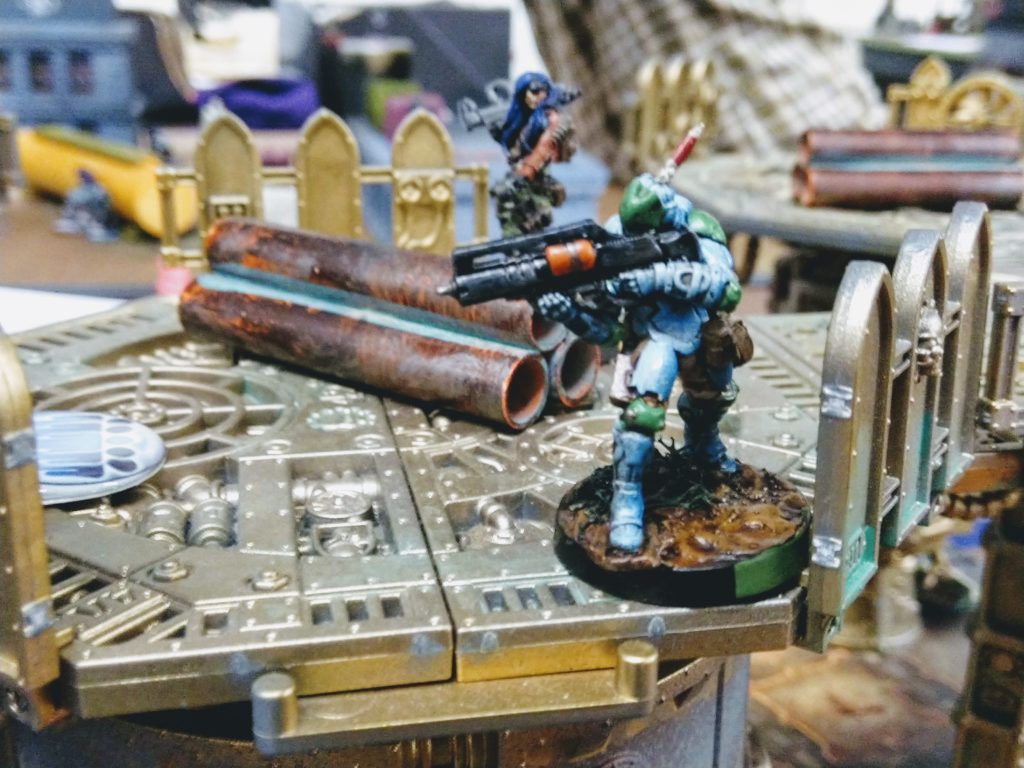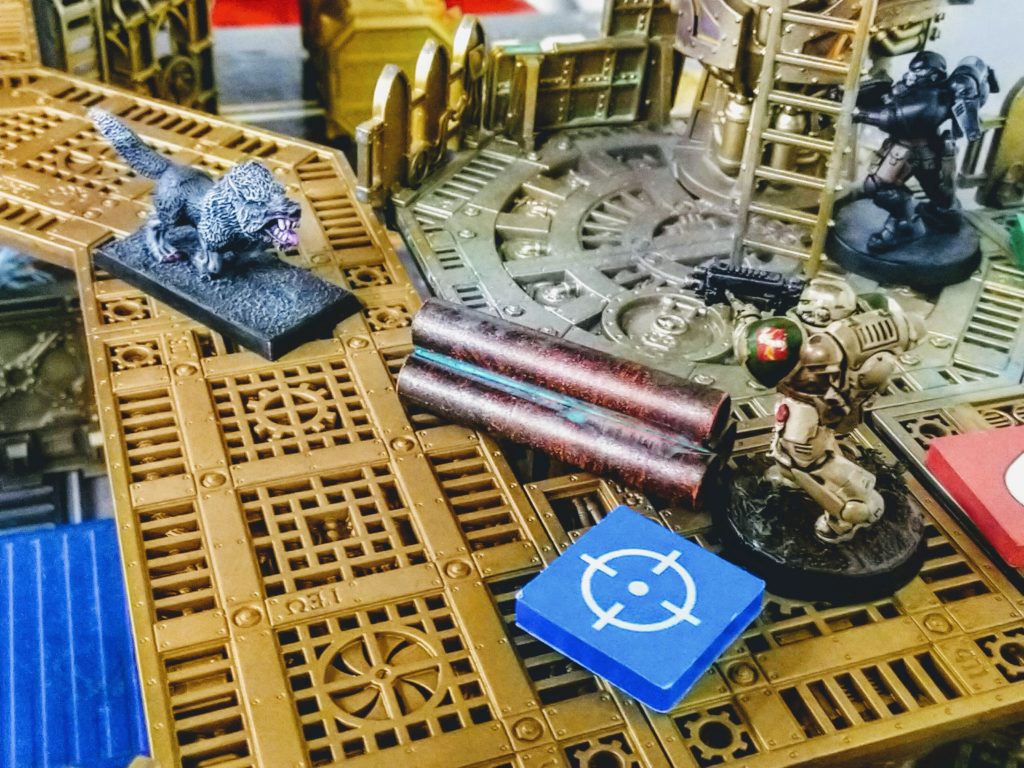Recently I’ve been slowly putting together some Guardsmen for Kill Team. I had some unfinished models on bases detailed using the Imperialis Basing Kit that Games Workshop made a few years back. The kit was kind of unique in that it didn’t have bases, it had little resin toppers that you put on top of bases (as well as some rocks, gravel, etc.). I have no idea why they did it that way. But I wanted to match the models I’d assembled with them, so I created some similarly styled base toppers to 3D print. They are now available on Thingiverse.
Tag Archives: miniatures
Foxhole Markers
I’ve uploaded to Thingiverse some simple markers for Infinity to denote a model in Foxhole state.
